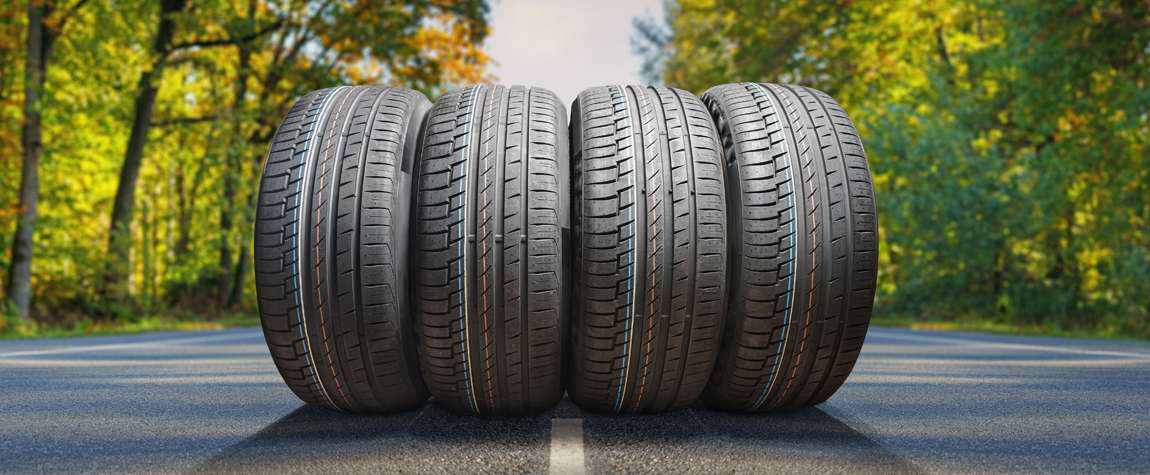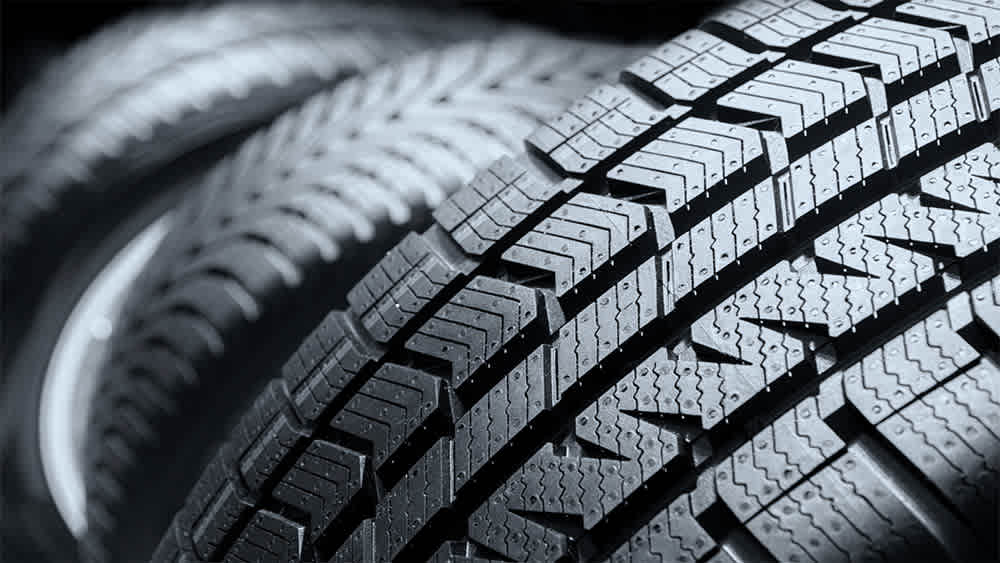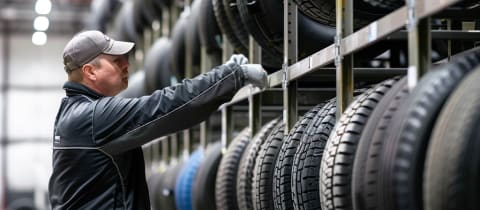Tire News & Information
Free shipping
Best price guarantee
Special pricing
Financing with Resolve
Easy returns

Tire prices have surged dramatically over the past few years, leaving many drivers shocked at the cost of this essential vehicle component. The average price of tires has risen 21.4% in just two years—a staggering 70% higher than core inflation rates.
This sharp increase means a tire that previously cost $100 now runs about $120, while premium options that were $250 have jumped to $300 or more. These price hikes don't even include installation fees, alignment services, or the reality that most drivers need to replace multiple tires at once.
Understanding why tires command such high prices requires examining the complex blend of materials, engineering, and global economic forces that go into every tire. From rubber plantations in Southeast Asia to advanced manufacturing facilities, each step in the tire-making process adds layers of cost that ultimately show up on the price tag at your local tire shop.
What Makes Tires So Expensive?

Understanding the Basic Components
Modern tires are far more complex than the simple rubber circles many people imagine them to be. Natural rubber comprises about 19% of passenger tires, sourced primarily from rubber trees in Southeast Asia where latex drips from carefully carved grooves in the bark. This natural rubber provides the tear resistance that keeps tires intact under stress, but it's just one piece of an intricate puzzle.
Synthetic rubber polymers make up another significant portion of tire composition, engineered specifically to improve traction and maintain proper inflation. Steel wire and textile cords weave through the tire's structure like a skeleton, providing the stability needed to support thousands of pounds while rolling at highway speeds. Perhaps most critical is carbon black powder—a soot-like substance that gives tires their characteristic black color and essential strength. Without carbon black, tires would have the durability of rubber bands, unable to withstand the friction and heat generated during normal driving.
Each component requires specialized sourcing and processing:
- Natural rubber: Harvested from plantations, processed into blocks, and shipped globally
- Synthetic polymers: Manufactured from petroleum in chemical plants
- Steel belts: Produced to exact specifications for different tire types
- Carbon black: Created through controlled combustion of heavy petroleum products
- Chemical compounds: Mixed in precise ratios for optimal performance
The Complex Engineering Behind Modern Tires
The engineering challenges that tire manufacturers face push costs higher with each new advancement. Today's tires must perform seemingly contradictory tasks—they need minimal friction for fuel-efficient highway cruising yet maximum friction for emergency braking. This paradox requires sophisticated chemical formulations and tread designs that took decades to develop.
Engineers must also ensure tires perform reliably whether the temperature is 120°F in Arizona or -30°F in Minnesota. This temperature range demands rubber compounds that remain flexible in extreme cold without becoming too soft in extreme heat. Add requirements for reduced road noise, improved fuel efficiency, longer tread life, and better wet-weather traction, and the complexity multiplies exponentially.
Specialized tread patterns represent another layer of engineering sophistication. These aren't decorative designs but precisely calculated channels that:
- Channel water away: Preventing hydroplaning through specific groove depths and angles
- Maintain contact: Ensuring consistent road grip across varying surfaces
- Reduce noise: Minimizing the sound generated by air compression in tread blocks
- Optimize wear: Distributing forces evenly to extend tire life
- Enhance performance: Providing the right balance of comfort and handling
Years of research and development go into creating tires that meet increasingly strict safety standards while delivering the performance drivers expect. Testing facilities subject prototype tires to thousands of hours of punishment, simulating everything from high-speed cornering to pothole impacts. This extensive development process, combined with the need to create different formulations for various vehicle types and driving conditions, adds substantial costs that manufacturers must recoup through tire pricing.
How Raw Material Costs Impact Tire Prices

Natural Rubber Supply Challenges
The path from rubber plantations to tire production has faced numerous obstacles recently. When the COVID-19 pandemic hit, key rubber-producing regions like Thailand and Malaysia encountered significant labor disruptions. Travel restrictions and border closures kept essential migrant workers from reaching plantations, stalling the harvest of rubber latex. Without sufficient manpower, the production and processing of natural rubber lagged behind demand, leading to supply constraints.
Adding to these challenges, severe weather conditions, including storms and heavy rains, damaged rubber tree plantations. Fungal diseases also spread rapidly, further reducing the rubber yield. These factors combined to drive natural rubber prices up significantly, causing a ripple effect throughout the tire industry. Manufacturers found themselves paying more for raw materials, which inevitably resulted in increased tire prices for consumers.
Petroleum-Based Materials and Global Events
Tire manufacturing heavily depends on materials derived from petroleum, such as synthetic rubber and carbon black, which form a substantial part of a tire's composition. The cost of these materials closely follows fluctuations in global oil prices. The increased cost of these critical materials places a financial burden on tire manufacturers, who must navigate higher production expenses.
Why Manufacturing and Technology Drive Up Costs

Advanced Production Processes
Creating tires involves a sequence of intricate steps that ensure each product meets strict performance and safety criteria. The journey begins with precisely mixing rubber compounds, a process that demands careful control of temperatures and timing to ensure durability and resilience. This meticulous attention to detail guarantees that the tires can endure the varied challenges of everyday driving.
Quality control remains central to the tire manufacturing process. Each tire undergoes thorough testing to identify and rectify any imperfections before reaching the market. Advanced machinery plays a crucial role in this stage, providing detailed measurements and ensuring that every tire achieves the highest standards of balance and safety.
Different tire types, such as those designed for winter conditions or sporting low profiles, demand specialized production techniques and equipment. Manufacturing plants must remain versatile, adapting to these diverse requirements while maintaining uniform quality across vast production volumes. Additionally, rising energy expenses for operating these sophisticated facilities add to the overall manufacturing costs.
Innovation and Safety Features
Incorporating advanced technology and safety features into tires raises production costs further. Run-flat technology, for example, enables continued driving despite a puncture, requiring robust sidewalls crafted from advanced materials—an innovation that increases manufacturing complexity and cost.
Efforts to enhance fuel efficiency have led to the development of low rolling resistance designs, which reduce the energy needed for vehicle movement. Achieving this efficiency involves specialized engineering and materials, contributing to higher tire prices. Some tires now feature sensors that provide real-time data on pressure and temperature, enhancing driver safety and vehicle performance.
The development of sophisticated tread compounds is another area where technology significantly impacts costs. These compounds offer superior traction, particularly in challenging weather, but depend on costly materials to achieve these benefits. To comply with rigorous safety regulations, manufacturers engage in ongoing testing and certification processes, further increasing the expenses associated with producing modern tires.
What Additional Costs Affect Final Tire Prices

Transportation and Distribution
The path from factory to consumer involves multiple logistical hurdles that impact tire pricing. Freight costs for shipping containers from Asian production centers have risen sharply due to a combination of fuel price increases and heightened demand for global shipping services. These factors, along with significant port congestion, contribute to extended transit times and additional expenses, which inevitably affect tire prices.
A shortage of truck drivers exacerbates these distribution challenges, as fewer drivers are available to transport goods efficiently across regions. This shortage results in delays and increases transportation costs, directly influencing the retail price of tires. Many tire retailers depend on distributors to connect manufacturers with local outlets, but these distributors often impose their own markups to cover operational costs. Moreover, the need to maintain larger inventories to offset potential delays has driven up storage expenses. Fuel surcharges for deliveries further add to the final pricing structure.
Installation and Service Expenses
The total expense of new tires extends beyond the purchase price, encompassing various installation and service-related costs. Tire prices have climbed significantly due to factors such as increased labor costs. With upward wage trends, tire shops face higher expenses for employing skilled technicians to perform installations, balancing, and other necessary services, resulting in higher charges for consumers.
Installation fees play a significant role in the overall cost of tire purchases. These fees often exclude essential services like wheel alignment, which is critical for ensuring tires wear evenly and perform optimally. Additionally, many drivers choose to purchase road hazard warranties or protection plans, which offer coverage against unforeseen tire damage but come with an added cost. Each of these components contributes to the total expenditure, shaping the final amount consumers pay when outfitting their vehicles with new tires.
How to Make Smart Tire Buying Decisions
Understanding Your Options
Choosing the right tires requires more than simply opting for the most affordable choice. Checking prices across different retailers can reveal notable variations for the same tire model and size. For instance, some retailers may offer a set of tires for $550, while others list them for $346. This discrepancy highlights the importance of conducting thorough research and comparisons, ensuring you find the best deal without sacrificing quality.
When evaluating less expensive tire options, it's essential to consider the potential trade-offs involved. Budget tires might not provide the same durability or performance features as premium versions, which can impact handling, fuel efficiency, and safety over time. Analyzing the differences between budget and premium tires helps balance financial considerations with your driving needs, ensuring you choose products that match your specific requirements. Moreover, some retailers, including SimpleTire, offer financing plans, providing flexibility in managing tire purchases.
Money-Saving Strategies
Strategically timing your tire purchase can yield significant savings. Retailers frequently offer discounts during promotional events or seasonal sales, making quality tires more accessible. Buying online on websites like SimpleTire often presents competitive pricing, and free shipping options allow you to compare and select the best deal conveniently from home.
Exploring manufacturer rebates and special offers can further decrease costs. These promotions frequently occur around holidays or at the end of tire seasons, presenting additional opportunities for savings. Beyond the initial purchase, proper tire maintenance is key to extending value. Ensuring tires are inflated to the recommended pressure prolongs their lifespan, while regular rotations—every 5,000 to 7,000 miles—help achieve even wear and optimal performance. When replacements are necessary, installing tires in pairs or complete sets maintains vehicle balance and safety, safeguarding your investment over time.
While tire costs continue to rise due to complex manufacturing processes and global economic factors, understanding these price drivers helps you make informed purchasing decisions that balance quality, safety, and value. By shopping strategically and maintaining your tires properly, you can maximize your investment and ensure your vehicle performs safely for years to come. Ready to find the right tires at competitive prices? Shop for tires online and find the best deals with us today.
Ready to find the perfect tires?
Search By